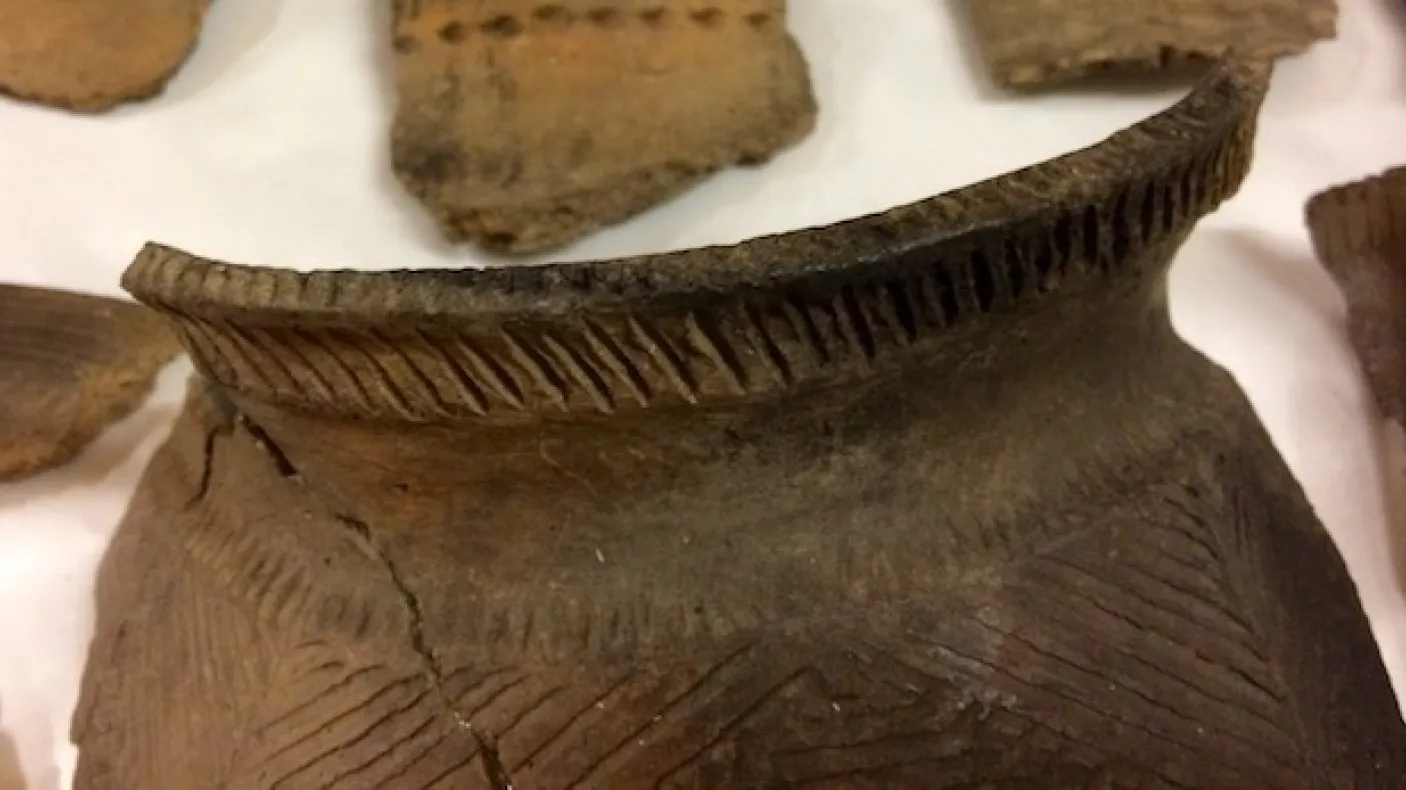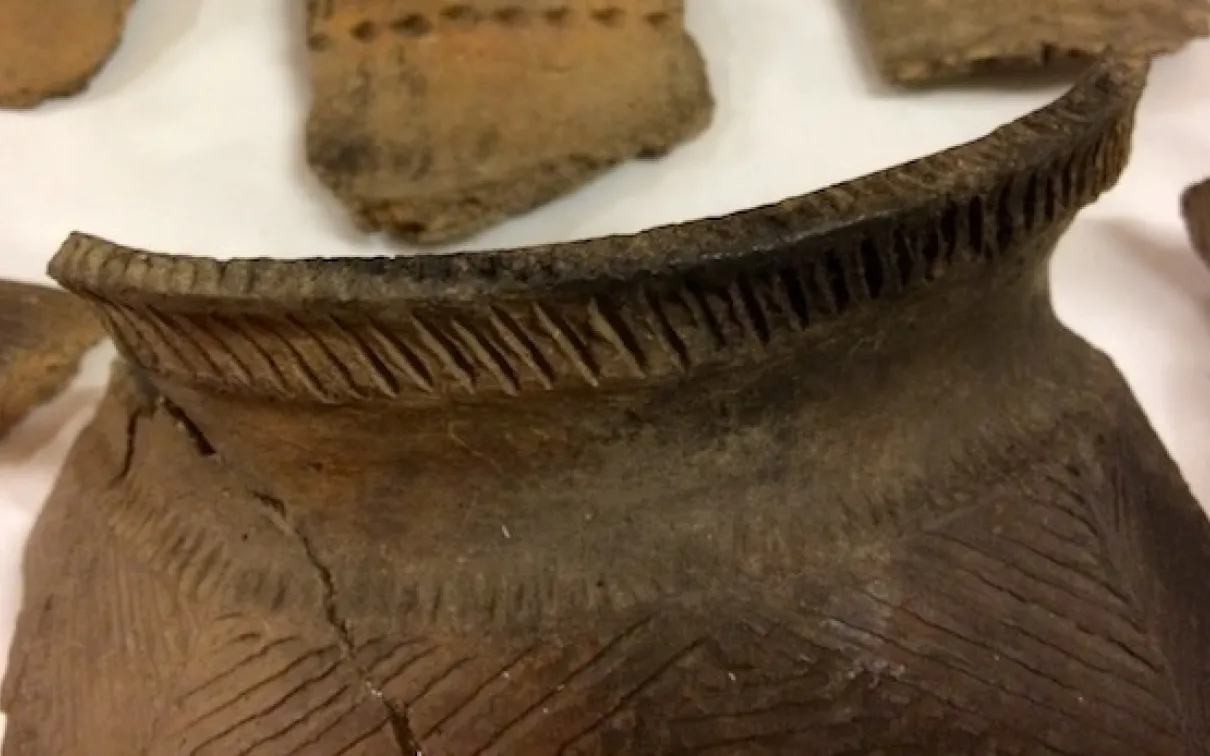Archaeological Approaches to Ceramics
Published
Categories
Author
Blog Post
By Ashley MacLellan and Craig Cipolla
Back in October, we posted the first in a series of blog entries dedicated to ROM curator, Craig Cipolla’s collaborative research project with Wyandot artists Richard Zane Smith and Catherine Tammaro entitled, “Remembering Ancient Pottery Traditions.” We encourage readers to look back and review the general goals of the project before diving into this post. In this entry we report on the specific ceramic collections that we viewed and discussed with Richard and Catherine, summarizing typical archaeological approaches to Huron ceramics.
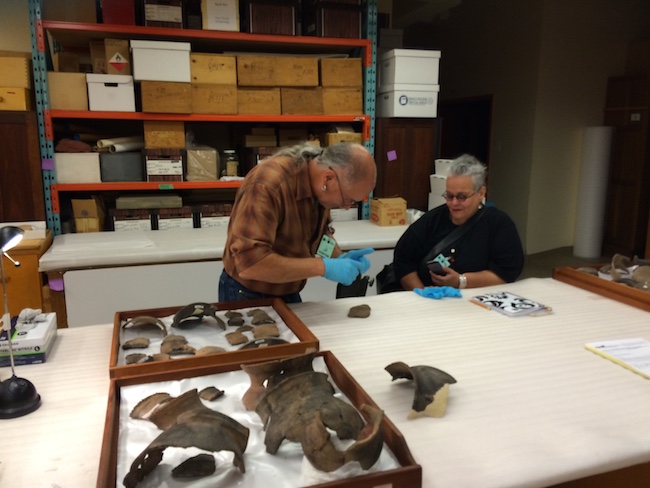
Richard and Catherine examine pots in the ROM’s New World Archaeology collection room
Richard and Catherine’s ancestors in Huronia—an area consisting of present-day Simcoe County and Georgian Bay (see map below)—made the ceramics we examined together. More specifically, the ceramics come from an archaeological site located in current-day Medonte Township known to archaeologists as the “Thomson-Walker” site. The site was a seventeenth-century palisaded village (1625-1635), named after the modern-day owners of the land on which the site sits (a). The site was approximately 6,500 square meters in size and contained anywhere from 20-40 longhouses, likely occupied by 20-30 people each (b). One of four Iroquoian speaking members of the Huron Confederacy, the Attigneenonghahac (Cord) Nation, is thought to have build and lived in the village. The site is fairly typical for Huron villages of the time in terms of design, size, and artifacts present (c).
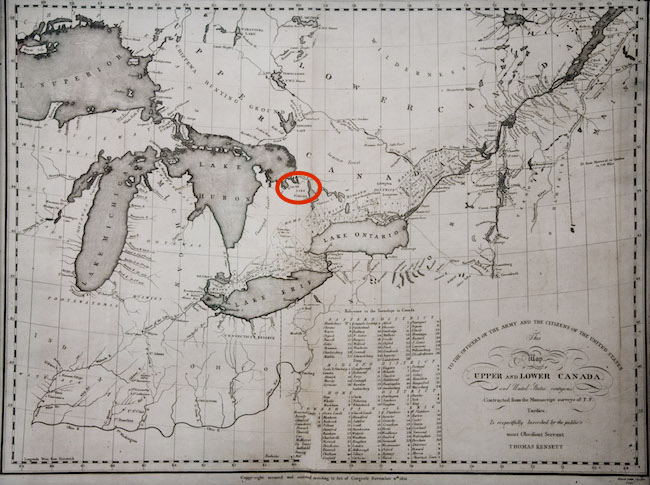
Map showing Huronia’s location (red circle) (d)
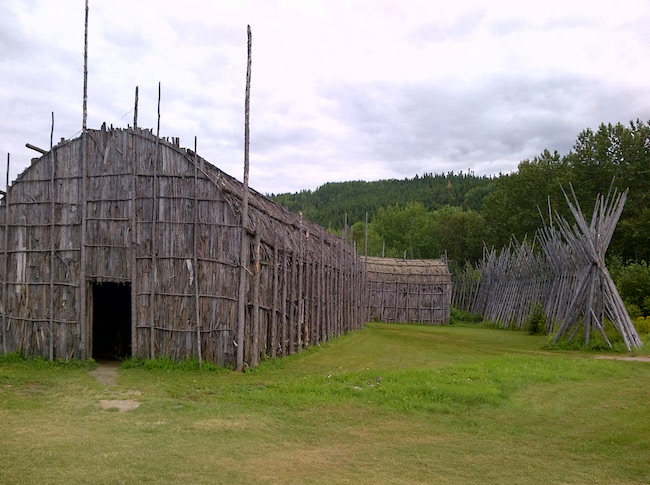
Photograph of a reconstructed longhouse (f), potentially similar to longhouses at the Thomson-Walker site
On the day of Richard and Catherine’s visit, they viewed a collection of 41 partial pots from the Thomson-Walker site plus several boxes of small ceramic fragments (or what archaeologists typically call “sherds”) and several other ceramic artifacts. Generally speaking, there are many ways to sort ceramics into types. Some archaeologists divide collections of pots up based on the different types of raw materials used in their production. For instance, sand or grit might have been used to strengthen some pots, while shell, animal bone, or ground-up fragments of old pots could have been used to strengthen others (adding materials to the clay to strengthen the pot is referred to as “tempering” the pot). In other cases, pots are divided up based on their relative shapes and sizes, or even their inferred function (for instance, cooking versus serving). Still in other cases, pots are sorted based on different styles of decoration. Archaeologists working on Huron collections often rely on the latter technique, rigorously recording and sorting collections of archaeological ceramics based on decorative motifs, particularly the decorations that appear around the collar of pots (see below). To read more on this type of work, we recommend consulting Richard MacNeish’s (e) 1950s ceramic typology for this region or Holly Anne Martelle’s excellent PhD dissertation on Huron potters (f1).
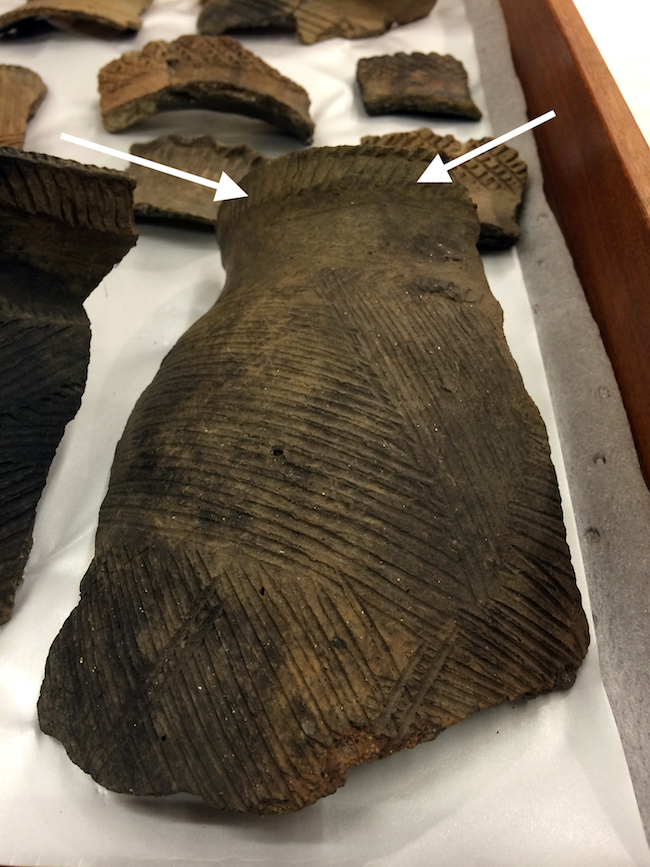
Photograph showing decorated collar of pot from the Thomson-Walker site
Ashley MacLellan, a student intern in the department, worked with Craig to systematically catalogue the ceramic collection viewed by Richard and Catherine. Together they recorded the size of each fragment of ceramic, used rim fragments to estimate the full diameter of each rim, and described and sketched the decorative motifs on each pottery fragment. They used MacNeish’s ceramic typology to sort the collection into different decorative types. There found a number of different designs in the collection, but the most popular were what MacNeish called the “Sidey Notched” and “Warminster Crossed” designs.
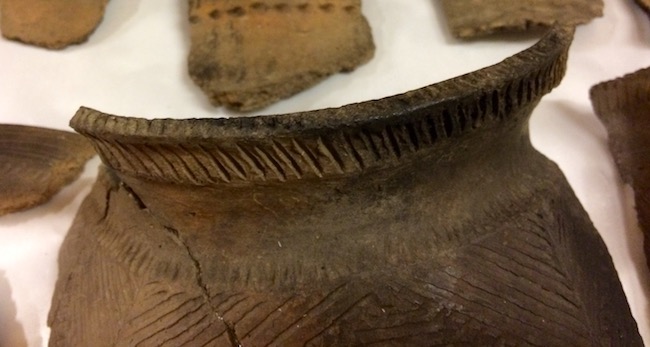
The “Sidey Notched” design has closely-spaced parallel lines running diagonally or vertically around the collar. The lips or rim surfaces of these types of pot are always incised or notched (g)
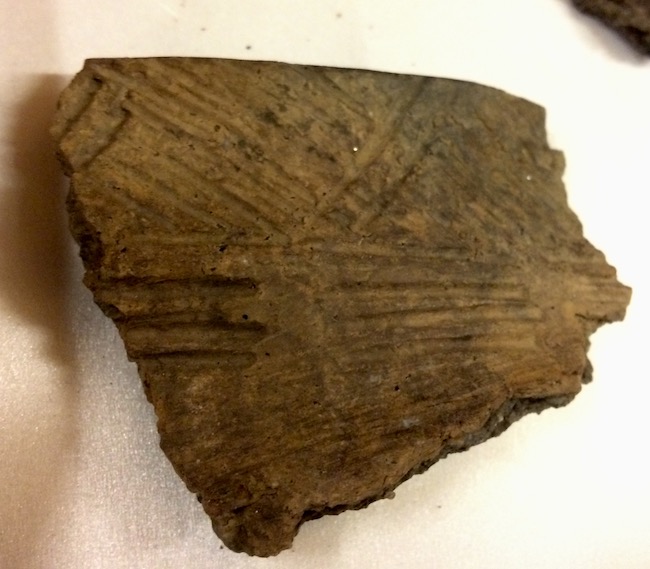
Collars of the “Warminster Crossed” design have closely spaced parallel diagonal lines crossed by widely spaced diagonal lines running in the opposite direction (h)
The question remains as to what these different decorative patterns actually mean and what they can actually tell us as archaeologists. For Richard MacNeish, they represented different ethnic groups and therefore offered archaeologists a valuable clue as to what groups made them, where these groups came from, and where they moved through time. Since the days of MacNeish’s work, however, archaeologists have come to recognize that artifacts do not simply reflect the identities of their makers and users anymore than the artifacts that we use today reflect who we are. For instance, using a cell phone manufactured in China does not make someone Chinese! If archaeologists 1,000 years from now look at the archaeological “sites” that we left behind in such a way, they would be quite confused and would certainly misunderstand who we were. Having noted this, archaeological ceramics do offer important clues to the past, including information on ancient technologies, social relations, exchange relations, symbolism, and aesthetic sensibilities to name a few.
In our next blog entry, Richard and Catherine share their take on the examined ceramic collection, helping to differentiate artistic and descendant community perspectives from the typical archaeological perspectives described in this post. See you next time!
Bibliographic Notes
- Martha A. Latta (1995), The Thomson-Walker Site BeGv-3, unpublished report; Alicia Hawkins (2015), The History of Archaeological Investigations at the Thomson-Walker Site, Heritage Matters 13(2): 12-13.
- Martha A. Latta (1995), The Thomson-Walker Site BeGv-3, unpublished report
- Martha A. Latta (1995), The Thomson-Walker Site BeGv-3, unpublished report; Ronald F. Williamson (2014) The Archaeological History of the Wendat to A.D. 1651: An Overview, Ontario Archaeology 94: 3-64.
- Map by Thomas Kensett (Photo of Original Map) [Public domain], via Wikimedia Commons
- Photograph by Pierre5018 (Own work) [CC BY-SA 4.0 (creativecommons.org/licenses/by-sa/4.0)], via Wikimedia Commons
- Holly Anne Martelle (2002), Huron Potters and Archaeological Constructs: Researching Ceramic Micro-stylistics, PhD dissertation, Department of Anthropology, University of Toronto.
- Richard S. MacNeish (1952), Iroquois Pottery Types: A Technique for the Study of Iroquois Prehistory, Bulletin 124, Anthropological Series 31, National Museum of Canada, Ottawa.
- Richard S. MacNeish (1952), Iroquois Pottery Types: A Technique for the Study of Iroquois Prehistory, Bulletin 124, Anthropological Series 31, National Museum of Canada, Ottawa.
- Richard S. MacNeish (1952), Iroquois Pottery Types: A Technique for the Study of Iroquois Prehistory, Bulletin 124, Anthropological Series 31, National Museum of Canada, Ottawa.
